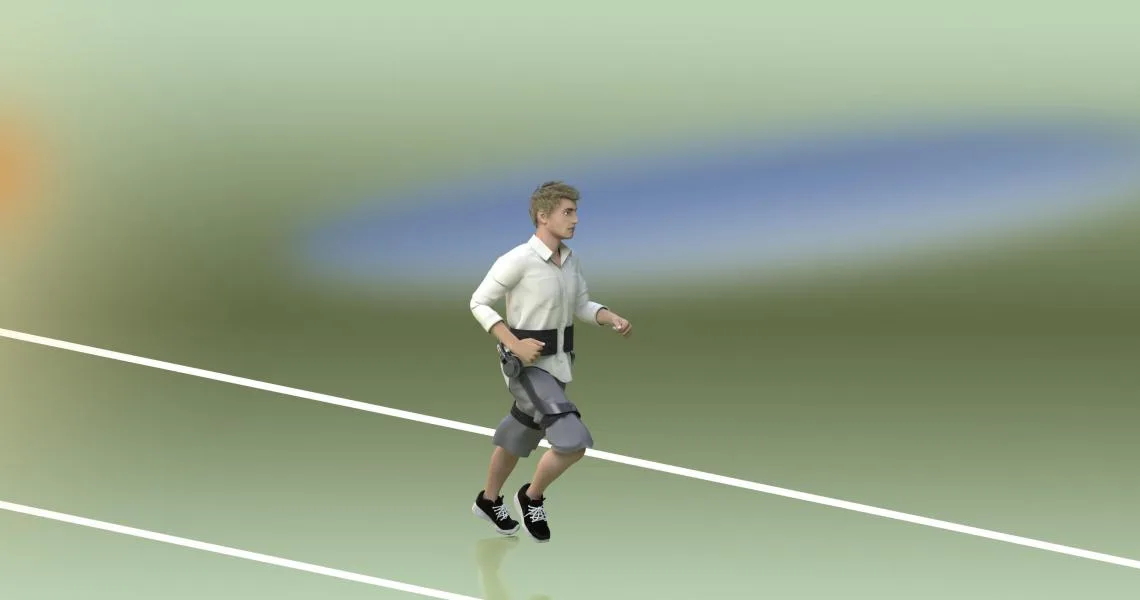Researchers have developed an AI-powered exoskeleton that enhances human locomotion and restores mobility. The team, led by Xianlian Zhou of NJIT’s BioDynamics Lab and Hao Su of North Carolina State University, used AI and computer simulations to train the exoskeleton, eliminating the need for lengthy human-involved experiments. The technology can be applied to a variety of assistive devices and holds promise for aiding individuals with mobility challenges. The exoskeleton reduces energy expenditure by 24.3% when walking, 13.1% when running, and 15.4% when climbing stairs. The research was supported by the National Science Foundation and the National Institute of Health.
AI-Driven Exoskeletons: A Leap Forward in Wearable Robotics
A team of researchers has developed a novel method that uses artificial intelligence (AI) and computer simulations to train robotic exoskeletons. These exoskeletons can assist users in saving energy while performing various locomotive activities such as walking, running, and climbing stairs. The method, described in a study published in Nature, allows for the rapid development of exoskeleton controllers without the need for extensive human-involved experiments.
The method’s versatility extends beyond the hip exoskeleton used in the study. It can be applied to knee or ankle exoskeletons, or other multi-joint exoskeletons, according to Xianlian Zhou, associate professor and director of NJIT’s BioDynamics Lab. The same principle can be applied to above-the-knee or below-the-knee prostheses, potentially benefiting millions of able-bodied and mobility-impaired individuals.
AI-Driven Simulations: The Future of Exoskeleton Control
The researchers’ approach represents a significant advancement in wearable robotics. The exoskeleton controller is developed exclusively through AI-driven simulations, eliminating the need for further human subject testing. This breakthrough could aid individuals with mobility challenges, including the elderly or stroke survivors, without requiring their presence in a laboratory or clinical setting for extensive testing.
The researchers’ work focuses on improving the autonomous control of embodied AI systems, where an AI program is integrated into a physical technology. This work expands on previous reinforcement learning-based research for lower limb rehabilitation exoskeletons. The new method provides a foundation for turnkey solutions in controller development for wearable robots, according to Shuzhen Luo, assistant professor at Embry-Riddle Aeronautical University.
Immediate Use and Future Prospects of AI-Powered Exoskeletons
Traditionally, users have to spend hours “training” an exoskeleton so that the technology knows how much force is needed and when to apply that force to assist users in walking, running, or climbing stairs. The new method allows users to utilize the exoskeletons immediately. The closed-loop simulation incorporates both exoskeleton controller and physics models of musculoskeletal dynamics, human-robot interaction, and muscle reactions, generating efficient and realistic data and iteratively learning better control policy in simulation.
The unit is pre-programmed to be ready to use right away, and it’s also possible to update the controller on the hardware if researchers make improvements in the lab through expanded simulations. Future prospects for this project include developing individualized, custom-tailored controllers that assist users for various activities of daily living.
Energy Efficiency and Potential Applications of AI-Powered Exoskeletons
In testing with human subjects, the researchers found that study participants used significantly less metabolic energy when walking, running, or climbing stairs in the robotic exoskeleton compared to without the exoskeleton. This finding suggests that the new method could help people with mobility impairments using assistive devices.
While the study focused on work with able-bodied people, the new method aims to help people with mobility impairments using assistive devices. The researchers are in the early stages of testing the new method’s performance in robotic exoskeletons being used by older adults and people with neurological conditions, such as cerebral palsy. They are also exploring how the method could be used to improve the performance of robotic prosthetic devices.
Funding and Support for the AI-Powered Exoskeleton Research
This research was conducted with support from several institutions, including the National Science Foundation, the National Institute on Disability, Independent Living, and Rehabilitation Research, the Administration for Community Living’s Switzer Research Fellowship Program, and the National Institute of Health. The funding and support from these institutions highlight the significance and potential impact of this research in the field of wearable robotics and assistive devices.
External Link: Click Here For More




